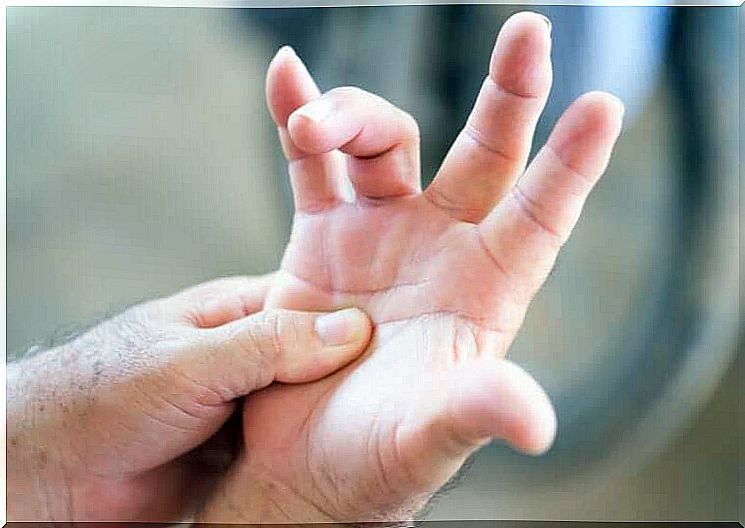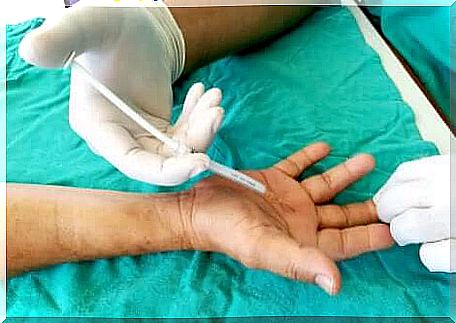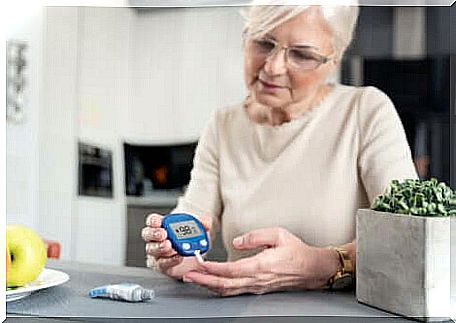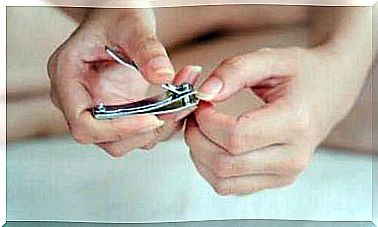Trigger Finger: Main Symptoms And Treatments
Trigger finger is a problem that can significantly affect hand movement. It is best to see the doctor when the first symptoms appear to improve the prognosis.

Trigger finger is a condition that limits the movement of the finger and may prevent it from bending. In general, it remains blocked and, to stretch or bend it, it is necessary to make a sort of cracking, as with a spring when it is stretched and released.
This abnormality occurs because of a problem in the long tendons, also called flexors. These slide in a kind of tunnel which surrounds them and which is called the digital channel. When this duct becomes irritated and inflamed, the tunnel narrows and complicates movement.
In the most severe cases, the trigger finger gets stuck in the flexion position and fails to move. This condition is also known as stenosing tenosynovitis and is more common in women and in those with diabetes.
Symptoms of trigger finger
The trigger finger can occur on any finger of the hand, and even the thumb. It is also common that there is always more than one finger affected, and even on both hands. The condition is progressive and usually begins with persistent pain at the base of the finger.
The initial symptoms of trigger finger are often the following:
- A bump appears around the base of the finger towards the palm of the hand.
- The muscle at the base of the finger is felt to be soft and tender to the touch.
- We find a feeling of stiffness in the finger, and more especially in the morning.
- A snap occurs when making a movement.
As the trigger finger progresses, it gets stuck in the flexion position and suddenly tightens. In more advanced phases, it hangs and can no longer stretch.

Diagnostic
The basis of the diagnosis of trigger finger is the physical examination performed by the doctor. By moving the affected area, a click occurs and this is considered characteristic of the abnormality.
The physical exploration continues by asking the patient to open and close the hand. The palm and base of the fingers will also be checked, focusing on manifestations of pain and signs of blockage. After that, it is possible to confirm the diagnosis.
Trigger finger treatments
The treatment of trigger finger depends on the condition it is in and the time that has elapsed between the onset of the disease and the medical consultation. In general terms, there are three ways to approach it: medication, therapy, and surgery.
Medicines
Medicines are used to relieve pain and reduce inflammation. Thanks to this, we facilitate the movement. Usually, nonsteroidal anti-inflammatory drugs, such as ibuprofen, naproxen, and the like are prescribed . This measure is used to improve symptoms but does not solve the problem.
Physical therapy
Trigger finger can also be treated with therapeutic physiotherapy measures, such as the following:
- Rest: Avoid activities that require grasping and holding or the use of vibratory devices for a period of four to six weeks. If rest is not possible, a padded glove should be used.
- Use of a splint: this allows the finger to stay stretched and is only used at night. Usually it is used for a month and a half.
- Light exercises: It is possible that some hand stretching exercises are recommended to us to improve the range of movement.
- Hot and Cold: Alternating ice and heat help reduce inflammation and pain.
- Immersion in lukewarm water: Immersing your hand in lukewarm water several times a day helps relax the tendons and relieves symptoms.
Trigger finger operations
When drugs and therapy don’t work, surgery should be done. Before the procedure, it is sometimes possible to try the following procedures:
- Steroid injection: it is applied into the tendon canal and it helps reduce inflammation. It can be effective for a year or more, but sometimes it may be necessary to apply it in more than one session.
- Percutaneous release: this involves inserting a large needle into the inflamed tendon, under anesthesia. This helps to loosen the compression that blocks the tendon.
If these procedures do not work, surgery is used. This is ambulatory and consists of an incision in the compressed area to cut the tendon canal. The greatest risk is infection or ineffectiveness of the operation.

Risk factors for trigger finger
Some people tend to develop trigger finger more easily. The known risk factors are:
- Age: people over 40 and under 60.
- Diseases: being diabetic, having hypothyroidism, rheumatoid arthritis or having tuberculosis.
- Have been operated on for carpal tunnel syndrome.
- Repetitive activities: work or a job that requires the gripping of objects on a permanent basis.
A condition with various treatments
Trigger finger is a condition that can significantly affect the quality of life. In these cases, it is recommended to adapt to the new conditions, avoiding seizure movements. If this is not possible, we must consider effective protections.
None of the treatments available are 100% effective. However, a high percentage of patients notice improvement after corticosteroid injections and surgery also results in good results. The outlook is therefore good.









